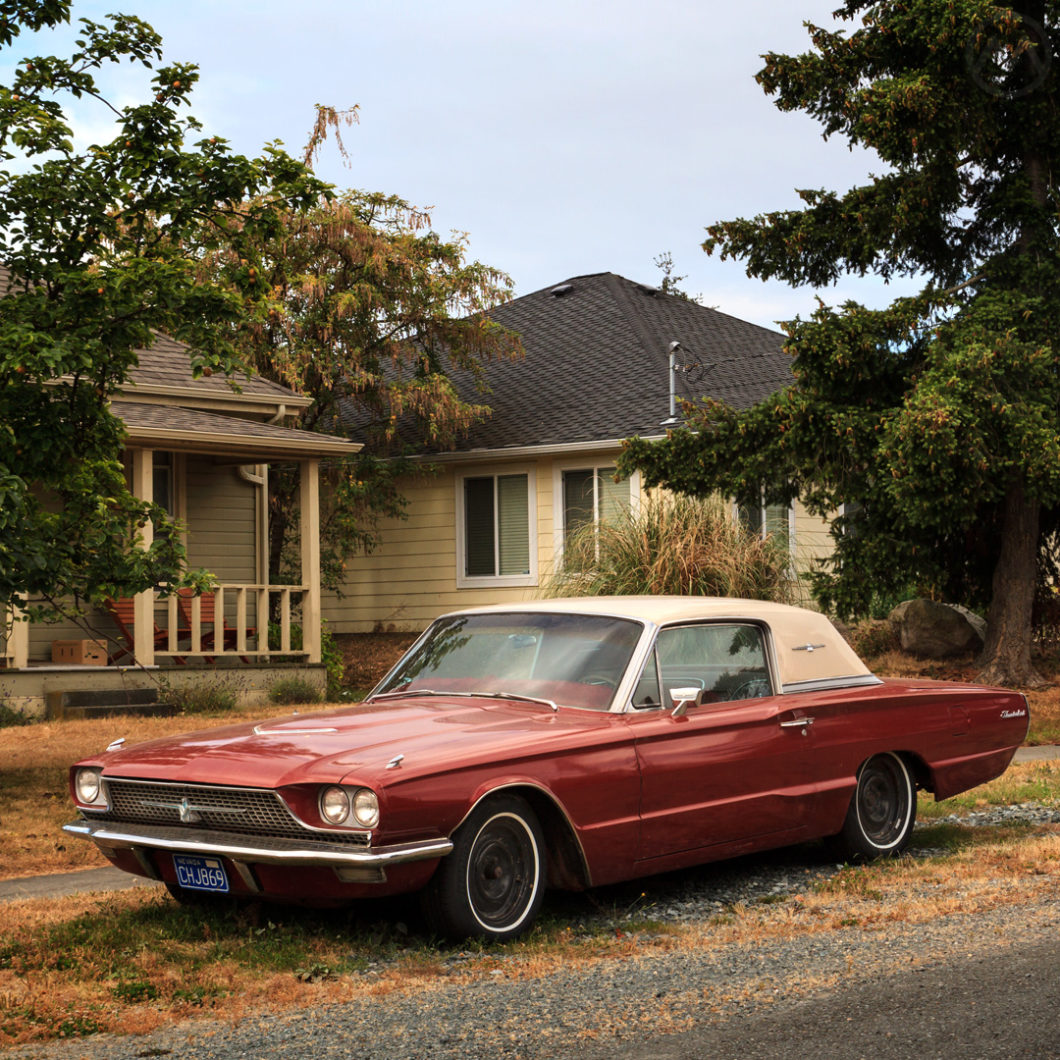“Sports car” fans were furious when Ford added two rear seats to the Thunderbird in 1958 – but they were the only ones who disliked it.
Ford GM Lewis Crusoe had seen the original T-bird as a halo car and a needed response to the Corvette, but the T-bird was not a money maker and Crusoe quietly had stylist Bill Boyer start work a four-seat replacement as early as March of ‘55.
The 1958 Thunderbird that emerged – the “Squarebird” – was a home run. It looked like a fifties dreamboat fresh off the motor show stand, but it was also practical and luxurious in a way no previous Ford had been. It was popular enough to defy even the 1957-58 recession.
The ’58-‘60 “square bird” gave way to Alex Tremulis’ fighter-jet inspired, clean-lined “Bullet bird” in 1961, but when it came time for the next generation, Ford revisited the ‘58.
Sales of the “bullet” just weren’t as strong as the “square,” so Boyer and his team took the older themes – in Boyer’s words they took the best elements of the previous three cars, but in practice it was mostly the idea of the ’58 – and created something that was still contemporary for 1964.
Creating the Flair
Because it was a costly unibody car, underneath, much of the structure was retained from the “bullet,” but you wouldn’t have known by looking – inside or out. John Najjar gave the car a new and flashy interior filled with switches, dials, and chrome – loads of chrome on almost every surface. Not for nothing were the new cars nicknamed “Flair birds” later on.
By 1964 GM had introduced a proper T-bird rival, Buick’s Riviera, but the Thunderbird was still king of the “personal cars,” despite a couple of disadvantages – namely weight.
At ~4,600 lbs., the Landau hardtop was 600lbs. heavier than a Country Squire and 700 lbs. heavier than a Riviera. The T-bird was not a dimensionally “large” car compared with most full sizes, and the weight didn’t make the T-bird the greatest performer or handler.
Why so heavy? It came from the robust unibody and all the gizmos Ford added to it (power everything and the wiring to match) – including sequential tail lights, designed for a ’64 intro but actually not introduced for another year. To help cope with the weight, front discs became standard in ‘65.
The T-bird was by then a pure boulevard cruiser, and were all automatics, as you’d expect from a luxury coupe in the sixties. Standard power came from the Ford 390 and, eventually, the 428 ( a few one-offs were built by dealers with different powerplants), but it was not a particularly fast car compared to Ford’s more obvious performers. It was, however, quiet and smooth for hundreds of miles at a time.
New Tricks for ’66
Every year, as was standard practice, the styling was updated in minor ways – but the biggest style change came for 1966, when the T-bird got a new optional roofline that hinted at “formal look” coupes yet to come.
Having already put the unibody through a comprehensive restyle in 1964, altering the roof was an easy way to keep things fresh as the car neared the end of its cycle. The existing hardtop roof was retained for ’66 as the base model Thunderbird, with two new models sporting a blind-quarter roof treatment that fully enclosed rear passengers.
The “Town” hardtops came in two forms – “Town Landau,” with vinyl and traditional “Landau” S-bars, and “Town hardtop.” The latter used same roof but painted with a T-bird emblem on the side, though some dealers offered a vinyl roof treatment without the landau bars for a kind of hybrid look.
The “Town Landau” was instantly popular – outselling all the other models combined, and pointing the way forward for the next T-birds, which would embrace the formal roof and the landau bars while embracing a sedan and doing away with the convertible altogether and also breaking all stylistic traces to the fifties.
The more plain “Town Hardtop,” seen here, was a one-year-only deal, and about 15,000 were sold. These were the last unibody Thunderbirds for a very long time, and although the ‘67 Thunderbirds were appreciably larger, they were also 200-300 lbs. lighter as a result of the change.
Sturdily built and often prized by their early owners, a large number of the “flair birds” survive.

